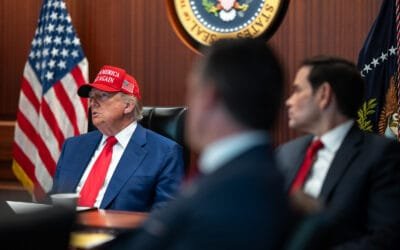The proposed restructuring of stock research at big Wall Street investment banks — if “proposed” is the proper word when NY attorney general Eliot Spitzer is doing the proposing holding a rubber hose in his hand — is an even worse-than-usual regulatory solution to a problem that isn’t even a problem.
The problem is securities fraud, pure and simple — the giving of investment advice known to be false.
Supposedly Merrill Lynch committed such fraud, as evidenced by an e-mail from once-superstar Internet analyst Henry Blodgett in which he privately called a stock he was publicly recommending a “piece of shit.” With that Blodgett became the most expensive writer in history, costing Merrill $33.3 million per word in a $100 million settlement with Spitzer.
Who knows if real fraud was involved. For a firm dependent on its credibility, up against the infinite prosecutorial resources at the disposal of Spitzer, 49 other state attorneys general, the SEC and several other layers of regulators, and an army of plaintiff’s lawyers, it was probably the smart thing to do to write that check.
That was just a down payment.
Now Spitzer and his co-conspirators are giving the whole investment banking industry the third degree. No doubt every Wall Street firm correctly fears that in the thousands of emails sent with presumed privacy between employees, things might have been said that could be turned into fraud cases. So now the whole industry is scrambling to settle.
The proposed settlement does not address the problem of fraud. It is not a punitive cash fine designed to punish the fraud, make reparations to the fraud victims, or deter fraud in the future by making it prohibitively expensive. It’s not really about fraud at all. Instead, it’s about requiring big Wall Street firms to make a big, silly do-gooding gesture. Under the proposal, they must jointly pay a billion dollars into a fund that would pay for independent stock research — performed by analysts not affiliated with the firms who put up the money. This research would then be distributed at no cost to the customers of the Wall Street firms.
It’s hard to know where to begin in cataloging everything that’s wrong — no, just downright loony — with this solution. First, it has nothing to do with the problem it is trying to solve — fraud. It leaves the alleged fraud unpunished. All it does is make the alleged perpetrators perform a service behalf of their customers that they wouldn’t otherwise perform and that the customers may not otherwise want — it’s not a deadweight cost like a fine paid to the government. And it’s not at all clear how subsidizing independent research will make the world a more fraud-free place for investors. If affiliated research is fraudulent, then it should be outlawed — what’s the point of leaving the fraud in place and diluting it by increasing the amount of independent research?
Second, who is going to determine, and on what basis, which independent research organizations will be blessed with the subsidy, and which will not? If the criterion is customer demand, then the money will go to research firms that are already successful and need no subsidy. If the criterion is need, then the money will go to firms for which no customer has ever expressed any demand — and presumably these firms produce the least valuable research. If the regulators pick who gets the money, we can be sure it will end up going to firms run by minorities, women, the disabled, and Vietnam-era veterans — and others similarly unqualified to produce high quality stock research other than by the fact that they were lucky enough to be unlucky. If Wall Street chooses, it will go to research firms headed by people with the best connections on Wall Street, throwing into question the whole notion of their independence.
And third, there’s no reason to think that anyone will even read all the independent research that will be subsidized. Most likely the big Wall Street firms will just dutifully mail it out to their customers en masse, reducing the perceived value of the independent research to that a statement stuffer that comes with the water bill.
This proposed solution assumes that the problem to be solved is the competitive structure of a profession. But the real problem is fraud. The attorneys general and the regulators be focused exclusively on detecting, deterring and punishing fraud. Once that’s done, investors will figure out who they want to buy their research from, and how it should be paid for.









